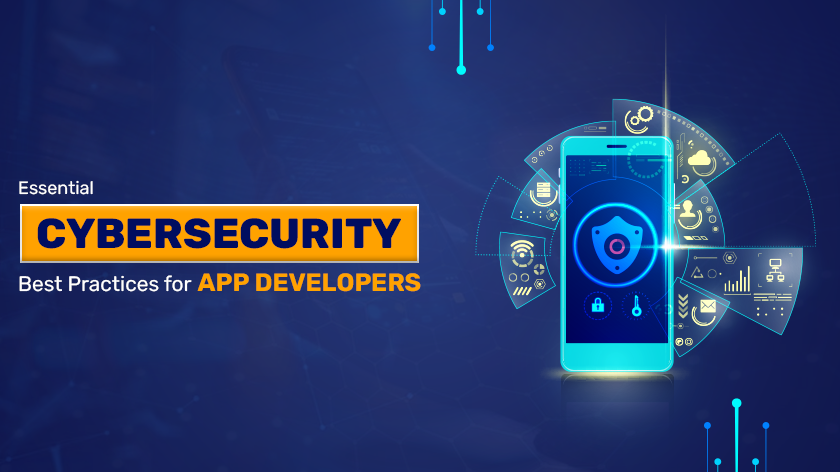As cyber threats grow more complex, developers must create secure and effective apps. Integrating cybersecurity into the development process is essential for protecting user data and ensuring system integrity. Below are key practices every app developer should follow to safeguard their applications.
1. Integrate Security from the Start
Security shouldn’t be an afterthought but a fundamental part of the development journey. Adopting a Secure Development Lifecycle (SDL) means embedding security into every phase from the initial design to deployment and ongoing maintenance.
- Threat Modeling: Assess potential vulnerabilities and possible attack paths early in the process.
- Code Audits: Regularly check your code to ensure compliance with secure coding guidelines.
- Security Awareness: Continuously train your team to recognize common security risks and how to prevent them.
2. Validate and Sanitize User Inputs
User input is one of the most vulnerable entry points for cyberattacks. To mitigate risks, ensure that:
- Input Validation: Only allow expected data types and formats.
- Sanitization: Strip out harmful elements from inputs to protect against injection-based attacks like SQL injection and XSS (Cross-Site Scripting).
- Parameterized Queries: Use prepared statements to securely interact with databases.
3. Enhance Authentication and Authorization
The security of your app’s access points is crucial in defending against unauthorized access:
- Multi-Factor Authentication (MFA): Give user logins an additional layer of security.
- Safe Password Storage: Use robust hashing algorithms like bcrypt to safely store passwords.
- Role-Based Access Control (RBAC): Follow the principle of least privilege by granting access according to user roles.
4. Encrypt Data, Both In-Transit and At-Rest
Data protection is paramount—whether data is being sent over networks or stored locally:
- Encryption in Transit: Always use encryption protocols like HTTPS or SSL/TLS to protect data in transit.
- Encryption at Rest: Safeguard stored data using strong encryption standards like AES-256.
- Key Management: Regularly update and securely manage encryption keys.
5. Secure Your APIs
Given their role in enabling communication between services, APIs are frequent targets for hackers. To protect them:
- Authentication: Implement secure protocols like OAuth 2.0 or API tokens.
- Rate Limiting: Protect against excessive API requests by enforcing rate limits.
- Input Validation: Apply rigorous input validation to all API endpoints, just as you would for user inputs.
6. Keep Dependencies and Libraries Up-to-Date
Modern apps rely on third-party libraries, which can introduce vulnerabilities if not properly managed. To minimize risks:
- Timely Updates: Regularly update all libraries and dependencies to incorporate the latest security patches.
- Vulnerability Monitoring: Use tools like OWASP Dependency-Check or Snyk to track known vulnerabilities in your dependencies.
7. Conduct Regular Security Testing
Continuous testing is essential to detect and address security flaws in your application. This includes:
- Static and Dynamic Testing: To find vulnerabilities in the source code and the running program, use the Static program Security Testing (SAST) and Dynamic Application Security Testing (DAST) tools.
- Penetration testing: To find vulnerabilities that might not be obvious, mimic actual attack scenarios.
- Fuzz Testing: Test how your app handles unexpected or invalid inputs to uncover hidden weaknesses.
8. Prevent Exposure of Sensitive Data
Exposing sensitive data can have severe repercussions for both users and developers. To prevent this:
- Data Masking: Hide sensitive data (e.g., credit card numbers) in logs or responses.
- Tokenization: Substitute sensitive information with non-sensitive placeholders.
- Secure Logging: Do not store sensitive information in logs, and ensure all logs are encrypted.
9. Implement Continuous Monitoring and Incident Response
- Monitoring Tools: Utilize tools to monitor system traffic, detect suspicious activity, and log security events.
- Incident Response Plan: Develop a clear, effective plan to respond to security breaches.
- Regular Updates: Regularly update your app to patch known security vulnerabilities and improve resilience.
Conclusion
App developers may reduce the risk of security breaches and build user confidence by following five crucial cybersecurity best practices. Cybersecurity is a continuous endeavor that necessitates continuing attention to detail, education, and threat adaptability.
Are you ready to develop a secure, high-performance app? Contact XcelTec for expert guidance in creating applications that prioritize security and reliability. Let’s work together to build the next generation of secure technology!
For more information: https://www.xceltec.com/
 :
https://in.pinterest.com/xceltec0192/
:
https://in.pinterest.com/xceltec0192/












